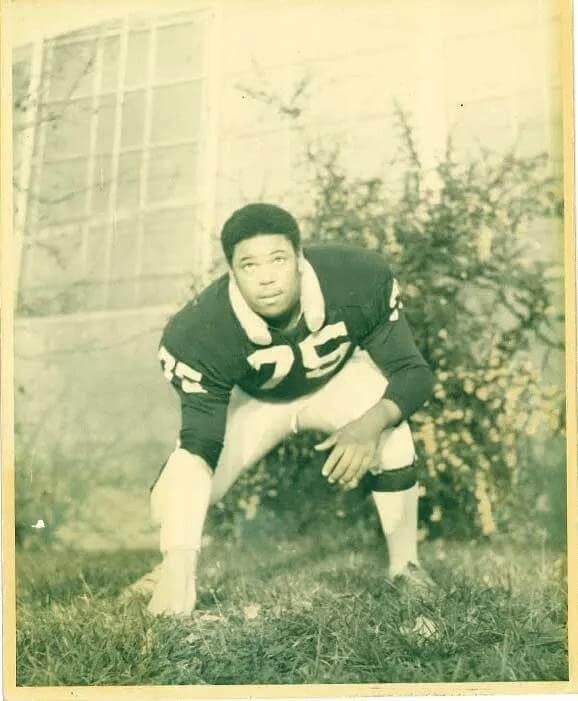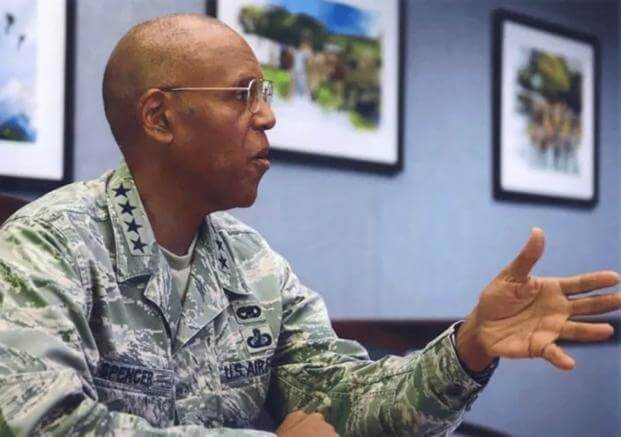This article first appeared on The War Horse, an award-winning nonprofit news organization educating the public on military service. Subscribe to their newsletter.
In 1971, as a high school senior and captain of the football team, I assumed a college athletic scholarship was in my future. And why not? I was considered one of the best high school players in Maryland and dreamed of playing in the National Football League.
There was a catch, however. As hard as I focused on football, I put little effort into academics. At best, my overall grade point average was a C-minus, and my SAT scores were worse.
Truth be told, I hated school, and I gave just enough effort to pass. I recall sitting in an algebra course questioning why (a+b)² was beneficial.
As I gazed out the classroom window (as I often did) onto the football field, earning a ticket to the NFL made much more sense. Unfortunately, my low GPA and SAT scores limited scholarship opportunities, despite my football talents.
By June graduation, my options had been reduced to several local colleges, which seemed less desirable than continuing to play football with the D.C. Bears, a semipro football team.
So, I took an entry-level job at the U.S. Census Bureau in Suitland, Maryland, played football on the weekends, and life was good.
However, as the summer came to an end, I was living in my parents’ basement, and I began to wonder about my future. While pondering my options at a local shopping mall, a chance meeting with an Air Force recruiter significantly altered the trajectory of my life.
The Air Force recruiter was a sharply dressed staff sergeant who invited me in as I stood admiring the airplane pictures on the glass window just outside his office.
A fast talker, the staff sergeant sold me on a plan that would have me enlist in the U.S. Air Force, complete basic training, take the Air Force Academy entry test, and—if all went according to plan—I’d be playing college-level football the following fall.
In hindsight, I suppose the plan he laid out was possible, but it certainly was not practical, especially considering my high school grades.

Nevertheless, the plan sounded so convincing that I signed up on the spot. The only thing standing in my way was to pass the Air Force entrance exam and physical exam—both of which I assessed as no-brainers.
I passed the written exam and was scheduled for a physical at the Military Entrance Processing Station (MEPS) facility in Baltimore. At six-feet-one-inch tall, my football playing weight for the semipro league was 250 pounds. But what the recruiter failed to tell me was that the Air Force deemed that someone my height should only weigh 200 pounds.
I was a bit dejected when the MEPS physician told me that since I was 50 pounds overweight, he could not approve my application. However, I was heartened when he told me that if I could lose 15 pounds on my own, that at 235 pounds he could approve me for the “Fat Boy Flight!”
“Fat Boy Flight,” I exclaimed, what is that? The physician explained that at 35 pounds overweight, he could approve me to join a special group of new recruits who had to lose weight to meet Air Force standards.
Armed with that information and my dream to play in the NFL, I launched myself on a strict diet and exercise plan. With no internet or Google to rely on, I decided to eat one sparse lunchtime meal each day, usually salad, and continue playing football.
In hindsight, that probably was not a healthy option, but I was determined. I remember lying in bed one night wondering if this self-imposed diet would work, but after losing seven pounds the first week, I knew I was on the right track.
Exactly two weeks later, I was down to 235 pounds. So, in November 1971, I boarded an airplane for the first flight of my life, en route to San Antonio, Texas, for Air Force basic training.
Despite the abrupt greeting of a screaming training instructor, I enjoyed basic training. The discipline of drill and ceremony and the physical demands were akin to a coach on the football field, so I felt right at home. In fact, I was excelling over my fellow flight recruits.
However, after two weeks, I was unceremoniously pulled out of my group and reassigned to a separate unit across the base, affectionately known as the Fat Boy Flight. I suppose the term “fat boy” could be considered derogatory, but at the time, I was not particularly offended—I just wanted to complete the program as soon as possible and resume basic training.
I joined the new flight of about 40 other new “fat boys.” Life in this exclusive group bore some resemblance to other basic training courses, except for the diet and exercise requirements.
We dined in a special chow hall that prepared low-calorie, bland, and ugly meals. I recall a large noontime salad with vinegar dressing that I particularly came to despise.
The daily exercise routine was intense. Each morning, we ran laps around a dirt track and did what seemed like never-ending pushups and situps, followed by group sports like volleyball or flag football.
The middle of the day was more like basic training, including marching, drills, and academic instruction. Finally, around midafternoon, we repeated our second exercise routine for the day.
Once again, I thrived in this environment. Without trying, I had already lost another 10 pounds so I was down to 225 when I entered the weight loss group.
On the weekends, many of my flight mates watched TV and found ways to sneak in snacks. I spent my weekends in the gym. The requirement for graduating from the Fat Boy Flight was to reach 10 pounds below the maximum weight allowed and pass a rigorous physical training (PT) test.
Four weeks from entering the program, I weighed 190 pounds and passed the PT test with flying colors.
Following graduation, I completed regular basic training. I didn’t notice the rapid weight loss until I visited home for the first time and my parents literally drove right past me as I stood in front of them at Washington, D.C., national airport in a service dress uniform, dragging an olive green duffel bag.
Despite the original promises by my recruiter, I was never contacted by the Air Force Academy, but by service year seven, I completed my college degree and was accepted into Officers Training School. Throughout more than 40 years in the Air Force, I heeded the weight management lessons from my weight loss journey and remained well within Air Force weight standards.

Although I never fulfilled my dream of playing in the NFL, 44 years later, a chance encounter at least rekindled that dream, if only briefly. While assigned to the Pentagon, I had the honor of participating in a coin toss for the Washington Commanders (then Redskins). I was on cloud nine as my name was announced in the stadium and I made my way to the middle of an NFL football field.
Following the coin toss, the head referee and I discussed how one becomes an NFL referee. We were so engrossed in that topic that we lost track of time. Suddenly, we were jolted back into the moment as the game management folks frantically screamed from the sideline for me to get off the field. As I started to hustle, I noticed that both teams had already lined up and were waiting for us to clear the field for kickoff!
I don’t know when or why the Air Force discontinued the Fat Boy Flight, but for me, it was a true blessing.
In the summer of 2015, I stood on a large stage in a large hangar at Andrews Air Force Base for a pass in review ceremony. I was being honored for my retirement as a four-star general and 37th vice chief of staff of the Air Force.
As I stood there at the position of attention and watched the troops march by, I couldn’t help but wonder what might have happened to me if it were not for that Fat Boy Flight.
This War Horse Reflection was edited by Kim Vo, fact-checked by Jess Rohan, and copy-edited by Mitchell Hansen-Dewar. Hrisanthi Pickett wrote the headline.
Editors Note: This article first appeared on The War Horse, an award-winning nonprofit news organization educating the public on military service. Subscribe to their newsletter.














